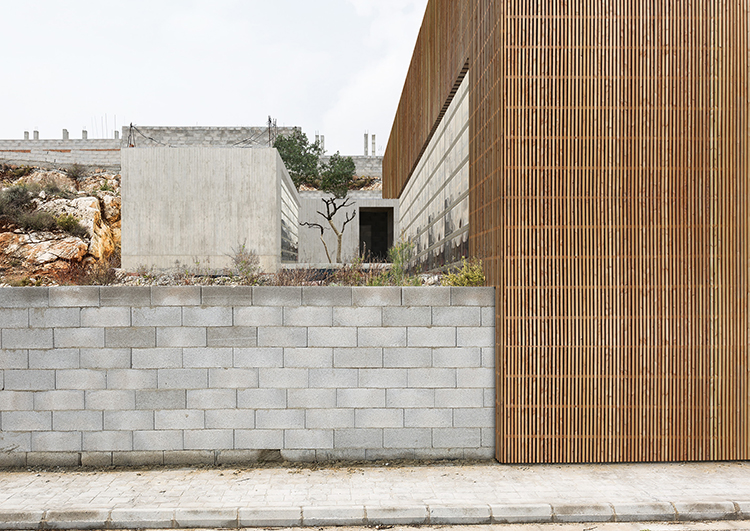C1603
Competition
2016
L’Ènova (ES)
La Cadena de Cristal was awarded and exhibited as a contribution to the exhibition Unfinished of the Spanish Pavilion of the 2016 Biennale Archittettura di Venezia.
Original idea and coordination: Rellam Authors: Andrea Gimeno, Lluís J. Liñán, Josep Vicent Lluch, Quique Bayarri, Sálvora Feliz, Ángel Gallego, Mayte Gómez, Marta Jarabo, José Mato, Beatriz Martínez, Patricia Ocaña, Tomás Pineda, Felipe Reyno, Jesús Vassallo Photography: Germán Cabo


The project we propose is based upon the collective appropriation of an interrupted real estate development -one that pursues the pro table uniformity of the repeated private unit- to turn it into a true expression of a community generated through difference. Here, the notion of community refers both to the type of fabric we envision and to the development of the project itself. Instead of materializing an individual vision, the conversation feeds off the words of twelve distinct interlocutors, leading to an architecture of difference that stems from the same, shared interest.
With the aim of projecting a parallel reality, this collective reflection is based on the appropriation of twelve unfished houses in L’Enova, a small village located 55 kilometers south of Valencia. Each interlocutor has acted on an existing house with the only constraint of using the same format and the same graphic ingredients: a drawing template and a photograph. Beyond these constraints, the only limits correspond to each individual look at the project. The new fabric generated after the conversation appears as a latent re ection of an urban model based upon collective difference, multiple opinions and the participation of an abandoned generation.




The most interesting aspect of this collection of distinct voices is that, once placed in parallel, the resulting fragments reveal the potential of this latent reflection when it becomes a project. The twelve colonized photographs no longer appear as a melancholic witness of what could have been, but as a tangible document that materializes a possible model. The debris of an exhausted system of production can be reused as the foundations for an alternative project –a project that pragmatically acts on existing reality to produce a feasible detour.
This alternative reality would bring into contact developers, small owners and architects. Instead of being deployed as a standard product, housing
would be developed as a series of individual versions of a shared material source. This would enhance a contingent, uneven and slow consolidation of the built environment that would lead to a more diverse landscape –a landscape that could not be anticipated by unilateral gestures. In the model we envision, a reality that sells individualism through repetition is hacked to activate a collective community made out of individual voices.